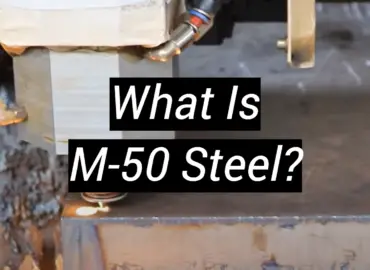Stainless steel 17-4 PH is a universal, weather-resistant natural material recognized for its remarkable blend of toughness, durability and resistance to corrosion. Thanks to its superior machinability, it is widely used in critical industries such as aviation, power generation, oil and gas, and marine shipbuilding.C
17-4PH is characterized by the ability to achieve outstanding mechanical properties through a simple processing process at a minimum temperature. In addition, the ease of manufacture of 17-4PH structural steel increases its suitability for use in the construction sector. It can be easily machined, welded and formed to a wide variety of geometries and sizes, making it the best choice for complex and demanding applications.
In summary, 17-4PH is a strong and flexible material that exhibits excellent physical properties, outstanding corrosion resistance and ease of fabrication, making it the best choice for a wide range of demanding and critical applications in a variety of industries.
Stainless Steel 17-4 PH
This type of stainless steel, also referred to as UNS S17400 or Grade 630, is a high-grade martensitically hardened metal. It is known for its unique combination of excellent tensile strength and reliable oxidation resistance.
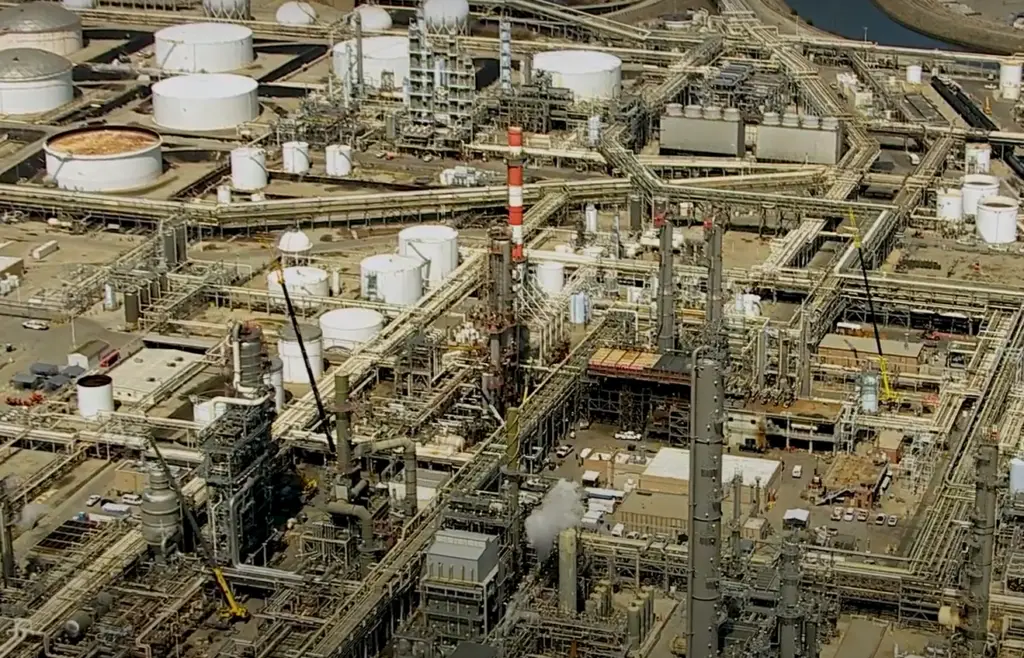
In the aerospace industry, the metal is widely used to manufacture critical components such as fasteners and landing gear. Additionally, the O&G sector relies on this alloy to manufacture valve parts, rollers, and other important parts because of its superior tensile strength and reliable corrosion resistance.
One of the features of this alloy is that it is extremely strong at high temperatures, making it a reliable option for use in high stress and hot environments. In fact, it can be heat-treated to varying degrees of complexity and strength, increasing its diversity even further.
Notably, this particular grade of SS retains its mechanical properties up to 600°F, making it an even more attractive choice for demanding applications in extreme environments. Thanks to its proven performance and durability, it remains the preferred solution for industries where reliability and durability are paramount.[1],[4]
Material description
Grade 17-4 PH is famous for its superior performance characteristics. This weather-resistant martensitic steel based on Chromium, Nickel and Copper is heat treated to achieve excellent levels of toughness and hardness.
But that’s not all: thanks to its low-temperature processing capability, this material not only has extraordinary properties such as toughness and hardness, but also impressive strength at elevated temperatures. These qualities make it very popular in a wide range of industries.
In addition, it is highly machinable, making it easy to process and shape to specific requirements.[2]
Chemical Composition (Specific for Bars)
The material content of 17-4 PH bars is carefully controlled to give them the desired properties. As a rule, it consists mainly of 15-17.5% Cr, 3-5% NI, 3-5% Cu and a maximum of 0.07% C.
Although the exact percentage of these elements may vary slightly, their careful balance is crucial to achieving the required balance of strength, stiffness and rust resistance in this type of steel. This material’s resistance to precipitation is attributed to a combination of Cr, Ni and Cu, which contribute to its well-known strength properties. This unique material provides superior performance in a variety of applications that require reliable performance and exceptional resistance to wear and corrosion.[4],[5]Applications
17-4 PH Stainless steel is an incredibly versatile material that is widely applied in a variety of fields. Its superior material qualities, such as high toughness and stiffness, coupled with great anti-corrosion performance, keep it a top choice for many industries.
In the aerospace manufacturing sector, this type of Stainless Steel serves a vital role in the production of parts such as fasteners and landing gear components. Its exceptional strength and ability to withstand harsh environments make it a reliable option for ensuring the safety and performance of aircraft.
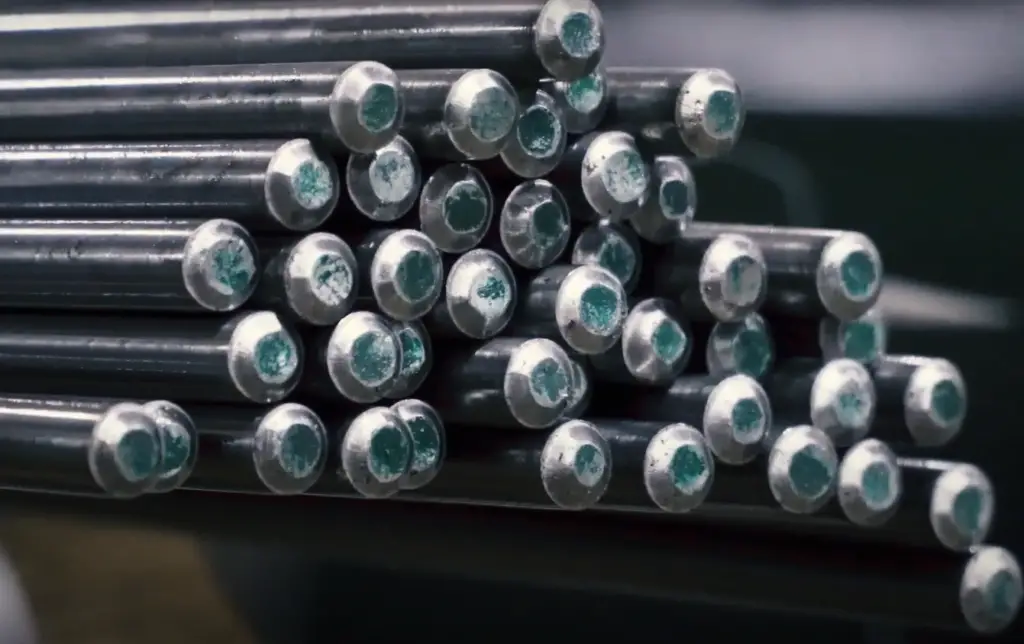
The O&G sector also makes extensive use of 17-4 PH for a variety of critical components. From valve parts to shafts, the robustness and high corrosion stability of this alloy is perfect for the harsh conditions found on oil rigs and pipelines.
Moreover, the chemical industry benefits from the use of this steel. Its extraordinary strength at high temperatures, combined with its ability to be heat treated to various hardness levels, makes it a preferred choice for equipment and components that handle aggressive chemicals and complex processes.
The automotive industry also recognizes the advantages of this material. Its excellent processability, precision and durability make it suitable for manufacturing parts that require high performance and reliability.
In addition, marine engineering uses 17-4 PH steel to great effect. The alloy’s durability and stress resistance provide the optimal choice for parts exposed to the harsh and aggressive environment of seawater, ensuring the durability and reliability of marine equipment and structures.
Thus, any industry that demands robustness, stress tolerance and longevity under high loads and extreme temperatures can greatly benefit from the exceptional properties of this type of SS. Their versatility and reliability make them the material of choice for a wide range of applications, enabling enhanced performance and longevity in a variety of industries.[5]
Reference standards
Various international standards govern the specification and utilization of 17-4 PH Stainless Steel. The US Society for Testing and Materials (ASTM) takes a decisive role in defining its properties and characteristics. In the ASTM A564 standard specification, which covers hot- and cold-rolled bars and sections of Stainless Steel that harden with age, UNS S17400 is described in detail. In addition, the Society of Automotive Engineers (SAE) recognizes this alloy under AMS 5643, specifically for steel bars, forgings and rings. It is worth noting that the European standard EN 10088-3 also recognizes the 17-4 PH grade for general-purpose semi-finished, rods, bars and profiles. These comprehensive standards have been developed to ensure the stability, reliability and quality of this alloy in various applications and regions, taking into account the specific requirements of various branches of production.[2]
General
Strict, universal standards are carefully followed in the production and use of Stainless Steel 17-4 PH to ensure exceptional quality and consistent consistency. Key among these industry-leading standards are ASTM A564, AMS 5643 and EN 10088-3 specifications, which carefully regulate every aspect of the production, testing and use of this superior alloy. These standards play a crucial role in ensuring that the material’s properties are constantly monitored, ensuring that it meets the required levels of power, toughness and stress resistance.
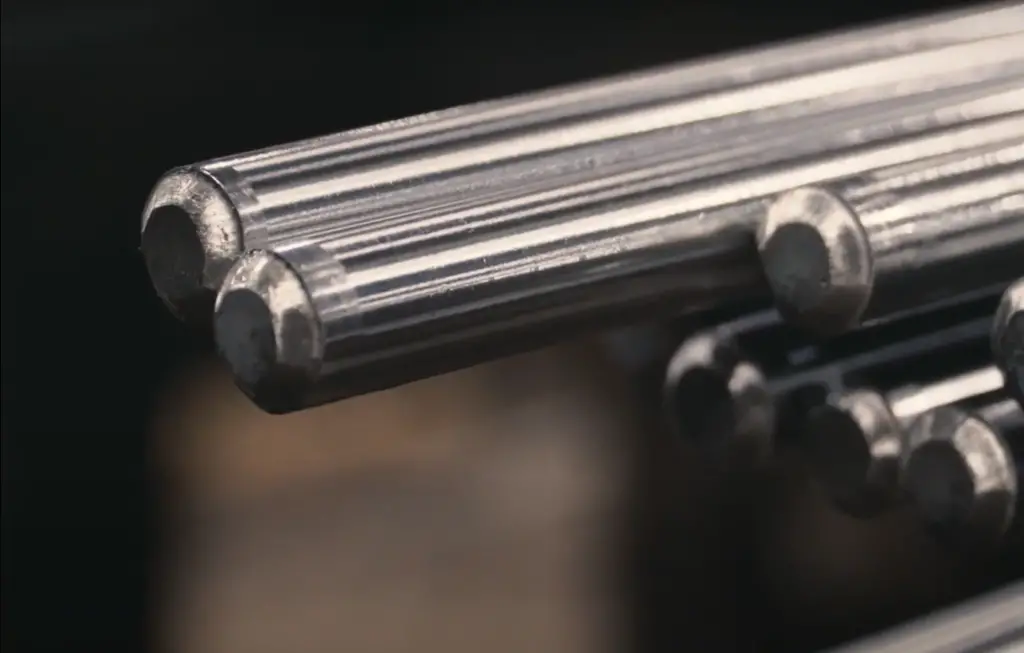
In addition, they carefully define the exact chemical composition of the alloy, thereby securing its unique weathering characteristics. Adherence to these rigorous standards is paramount for producers and end users of this steel across a variety of industries and regions, ensuring the highest level of confidence and reliability in the performance and durability of this exceptional alloy.
Bars
The standards for 17-4 PH Stainless Steel bars are established by various authoritative bodies to ensure the material’s consistent quality and exceptional performance across diverse applications. According to ASTM A564, these bars must meet specific mechanical properties, including tensile strength, yield strength, and elongation. Additionally, they must exhibit excellent resistance to corrosion, making them highly suitable for demanding environments. The AMS 5643 standard, set by the Society of Automotive Engineers, provides further specifications for 17-4 PH bars, encompassing requirements for hardness, heat treatment, and testing methods.
In Europe, the guidelines set by the EN 10088-3 standard are crucial for the production of semi-finished products, rods, and sections of 17-4 PH Steel for general purposes. Adhering to these rigorous standards is of utmost importance for manufacturers to ensure that the 17-4 PH Stainless Steel bars are capable of withstanding high-stress, high-temperature conditions commonly encountered in industrial applications.
It is due to these meticulous standards that Stainless Steel bars have earned a well-deserved reputation for their exceptional quality, reliability, and unmatched performance across a wide range of industrial sectors.
Properties
17-4 PH Stainless Steel exhibits a unique combination of properties that contribute to its extensive use across various industries. This versatile material is characterized by its exceptional strength and hardness, which can be further enhanced through precise heat treatment techniques. Depending on the level of heat treatment, the hardness can range from 33 to 43 HRC, ensuring optimal performance in demanding applications.
One of the standout features of 17-4 PH is its remarkable corrosion resistance, comparable to that of 304 stainless steel. This exceptional resistance makes it well-suited for challenging environments where exposure to corrosive elements is a concern.

Moreover, this remarkable stainless steel alloy demonstrates superior performance at high temperatures, retaining its mechanical properties even under elevated conditions. This capability makes it an ideal choice for applications that require excellent material strength in high-temperature environments.
Furthermore, this Steel exhibits excellent fabrication characteristics, including weldability and machinability. These properties not only ease the manufacturing and assembly processes but also provide versatility in diverse applications.
Lastly, the low-temperature properties of 17-4 PH Stainless Steel should not be overlooked. Its ability to perform well in cryogenic applications is yet another advantage, making it suitable for use in extreme cold conditions.
In summary, the exceptional properties of 17-4 PH SS make it the material of choice for industries that require high performance under demanding conditions. Its unique combination of strength, hardness, corrosion resistance, high-temperature capabilities, fabrication ease, and low-temperature suitability sets it apart as a reliable and versatile option for various applications.[1],[4],[5]
Mechanical
The mechanical properties of 17-4 PH Stainless Steel are truly exceptional, setting it apart from conventional Stainless Steels. With its remarkable combination of high strength and excellent hardness, this material has become widely preferred in demanding applications. Notably, the alloy exhibits outstanding tensile strength and yield strength, making it highly resistant to deformation under stress. Moreover, its excellent ductility allows it to be easily drawn into wires or formed into thin sheets without any risk of breakage.
What makes alloy even more remarkable is its ability to offer a wide range of hardness levels through heat treatment, ranging from 33 to 43 HRC. This versatility makes it suitable for a diverse range of applications. Additionally, this alloy maintains its exceptional mechanical properties even at high temperatures, making it an ideal choice for high-stress and high-temperature environments.
Another noteworthy characteristic of this steel is its commendable machinability. It can be easily cut and shaped with precision, providing immense versatility in various manufacturing processes. Furthermore, 17-4 PH Stainless Steel demonstrates remarkable resilience in low-temperature conditions, making it suitable for cryogenic applications as well.
With its mechanical properties governed by international standards, this steel ensures reliability and superior quality across a wide range of industrial applications. Its exceptional attributes make it a top choice for industries where strength, hardness, and versatility are paramount.
Electrical/Magnetic
17-4 PH Stainless Steel possesses exceptional electrical and magnetic properties that greatly expand its range of applications. It is characterized by a relatively high electrical resistivity, making it an ideal choice for various applications that require resistance to electric current.

Moreover, in terms of its magnetic properties, this metal is classified as semi-ferromagnetic. It exhibits low coercivity, allowing it to retain magnetism even after exposure to a magnetic field. This unique characteristic proves advantageous in the manufacturing of electromagnetic components, providing enhanced performance and reliability.
As such, adjusting the heat treatment process enables precise control over the material’s magnetic characteristics, tailoring them to specific application requirements. The ability to manipulate these controllable electrical and magnetic properties makes 17-4 PH Stainless Steel an exceptionally versatile material, not only in the mechanical domain but also in the electrical domain.Thermal
The properties of 17-4 PH Stainless Steel contribute to its remarkable versatility and suitability for various industries. With exceptional heat resistance, this steel maintains its mechanical properties even under extreme temperature conditions, making it ideal for demanding applications in aerospace and oil & gas sectors where materials often encounter high temperatures. Moreover, its relatively high thermal conductivity facilitates efficient heat transfer, proving advantageous in applications such as heat exchangers.
Additionally, the low coefficient of thermal expansion exhibited by this alloy ensures minimal expansion or contraction in response to temperature fluctuations. This property is particularly valuable in precision applications that require dimensional stability across varying temperatures.
These outstanding attributes establish 17-4 PH Stainless Steel as a preferred choice for high-temperature applications, and its adherence to international standards guarantees consistent performance.
Chemical
17-4 PH Stainless Steel is renowned for its exceptional characteristics, which can be attributed to its unique composition. Primarily consisting of Iron, this alloy also contains significant amounts of Chromium, Nickel, Copper, and Manganese. The Chromium content, ranging from 15% to 17.5%, imparts remarkable resistance to oxidation and corrosion. Meanwhile, the addition of Nickel and Copper, each ranging from 3% to 5%, enhances the alloy’s toughness and strength.
In addition to these key elements, trace amounts of Molybdenum, Niobium, and Titanium may also be present in 17-4 PH. These elements further contribute to its performance under diverse conditions, elevating its capabilities to meet the demands of various industries.
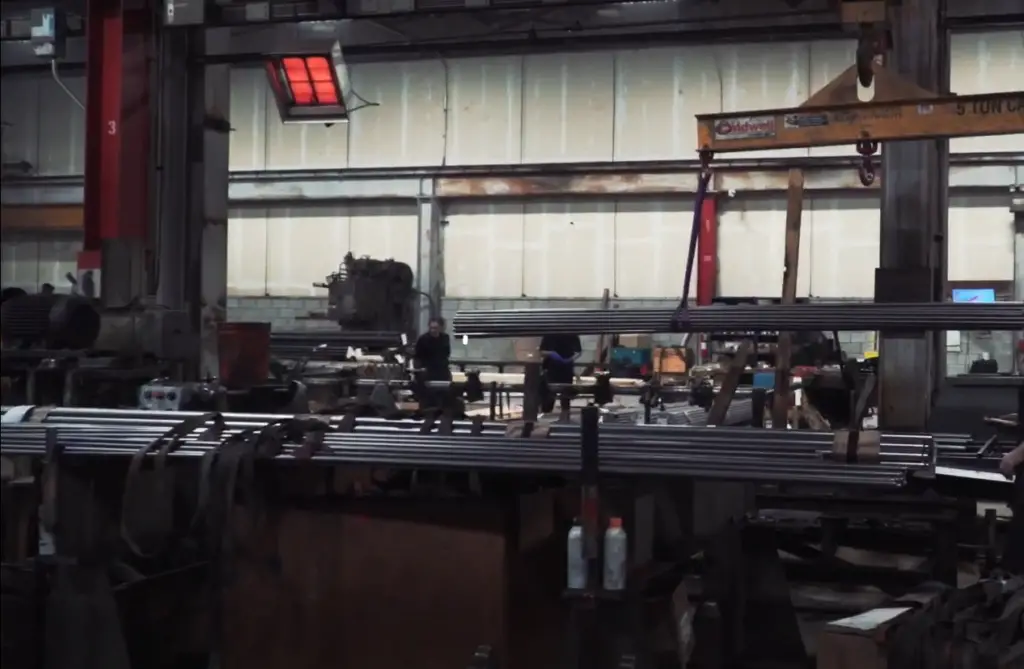
Notably, this alloy exhibits exceptional resistance to intergranular corrosion, making it highly durable in harsh chemical environments. Its precise chemical composition is meticulously maintained in adherence to strict international standards, ensuring consistent quality and performance. As a result, Steel continues to be the material of choice in a wide range of industries, where its reliability and versatility are unparalleled.
7 Points You May Not Know About Stainless Steel 17-4 PH
The Fastest Growing Method of Stainless Steel Precipitation Hardening
Among the types of atmosphere-resistant steel, 17-4 PH is the most generally applied. Its popularity is primarily explained by a rare blend of qualities that combine strong toughness, great resistance to corrosion and remarkable ductility. It is this flexibility that makes the alloy the preferred choice for a variety of uses in industries ranging from aviation and O&G to petrochemical and food production. The exceptional material characteristics of this type of steel are the result of the sediment quenching process, involving heating the alloy at a specific temperature, holding it out for a period of time and subsequently cooling it down. As a result of this process, precipitates are formed in the alloy, which significantly increases its mechanical strength and hardness. The ability to adjust these properties through controlled heat treatment provides a high degree of flexibility in adapting the material to specific application needs, which further contributes to its widespread use.
Usage in Seagoing Vessels: High Resistance to Corrosion
The superior oxidation stability of 17-4 PH grade is what drives the choice of stainless steel for marine vessel and maintenance projects. The harsh environment of seawater challenges the durability of ship components, making materials capable of withstanding such stresses a necessity. The high Chromium level in the material, ensures superior oxidation and erosion protection, making it impervious to the damaging effects of salty seawater. In addition, the content of nickel and copper increases its elasticity, contributing to the overall toughness and strength of the vessel. The stability of the alloy to spall and gap stress also helps to preserve structural integrity of marine vessels, thereby extending their service life. Thus, thanks to its robust anti-corrosion properties and durability, alloy is commonly applied in the marine industry, including in the manufacture of propeller shafts, pump parts and other offshore equipment that requires excellent anticorrosion ability and toughness.
Apply of 17-4 PH Stainless Steel in the Nuclear Power Industry
The extraordinary performance of 17-4 PH SS involves a perfectly matched solution to the requirements of the NPP. Its power to resist extreme heat and pressure, combined with impressive levels of wear protection, are crucial for equipment operating in the extreme conditions of nuclear reactors. This alloy also exhibits exceptional yield strength, making it an ideal material for components that must resist deformation under heavy load. In addition, lower rate of physical elongation of the alloy ensures minimal dimensional changes during temperature fluctuations at a nuclear power plant, which is an important characteristic for maintaining the structural integrity of components and systems. The strength and durability of this type of steel, combined with its ability to retain properties under high radiation conditions, make it the preferred choice for critical applications in the nuclear industry, such as the manufacture of fuel rods, reactor vessels and other structural parts of NPPs.
Usage in the Pulp and Paper Production Industry
In the papermaking process, 17-4 PH grade is widely valued for its outstanding ability to resist corrosion, provide superior durability and withstand extreme thermal conditions. The demanding environment of tissue and papermaking, which often involves the use of aggressive chemicals and high temperatures, requires materials that can stand up to these severe conditions. The Cr content of this high-grade material ensures exceptional protection against corrosive agents commonly used in pulp bleaching and paper manufacturing. Additionally, the high tensile and toughness of the alloy provide an optimal solution for the manufacturing of equipment subjected to high mechanical stress, such as pulping machines, paper rolls and blades. Even under constant thermal cycles, it maintains dimensional stability due to its minimal degree of heat absorption, which gives it a high degree of suitability for use that require precision and reliability.

The versatility and stability of steel type 17-4 PH has been the main reason why it is the material of preference for the pulp and paper sector.
Design of the turbine blade
When it comes to engineering power blades, the steel 17-4 PH has proven to be a very suitable substance. The big loads experienced during turbine operation require materials that are both strong and durable, and this alloy meets these requirements extremely well. Its excellent yield strength allows the blades to withstand the enormous centrifugal forces experienced during turbine operation, preventing deformation and fracture. Moreover, the material’s superior oxidation resistance provides long-term reliability of the blades, even in the presence of potentially harmful substances such as brine or moist air. Additionally, the alloy’s ability to retain its characteristics at elevated temperatures means it is an outstanding selection for power generation blades that are often exposed to extreme temperatures. The blend of those qualities combine to make this a preferred material for manufacturing power plant blades, which helps to improve the efficiency and durability of turbine systems.
Food Handling Machinery
17-4 PH is extensively utilized in the food service industry due to its outstanding levels of stress tolerance and durability. This industry deals with a wide range of products and drinks, as well as the corresponding conditions of their handling, which often include exposure to corrosive substances and heat. Strong toughness characteristics are desirable for equipment that has to withstand high mechanical loads, such as meat grinders, mixers and conveyors. Furthermore, the coefficient of physical growth of this grade ensures that it retains its mechanical stability even under frequent temperature changes typical of the food industry. Consequently, the alloy’s unique combination of properties makes it the best possible selection for the fabrication of a diverse range of food service machines, increasing the performance and durability of the gear.
17-4 PH type SS in the Oil and Gas Sector
In this area, stainless steel 17-4 PH is an integral part thanks to its amazing corporate reputation for resistance to oxidation, toughness and resilience in extreme conditions. This industry often deals with high pressure, corrosive materials and significant temperature fluctuations – all of which require robust materials for safe and efficient operation. The high level of Chromium in the material ensures superior resistance to aggressive substances such as Hydrogen Sulfide, Carbon Dioxide and Chlorides that are prevalent in the O&G sector.
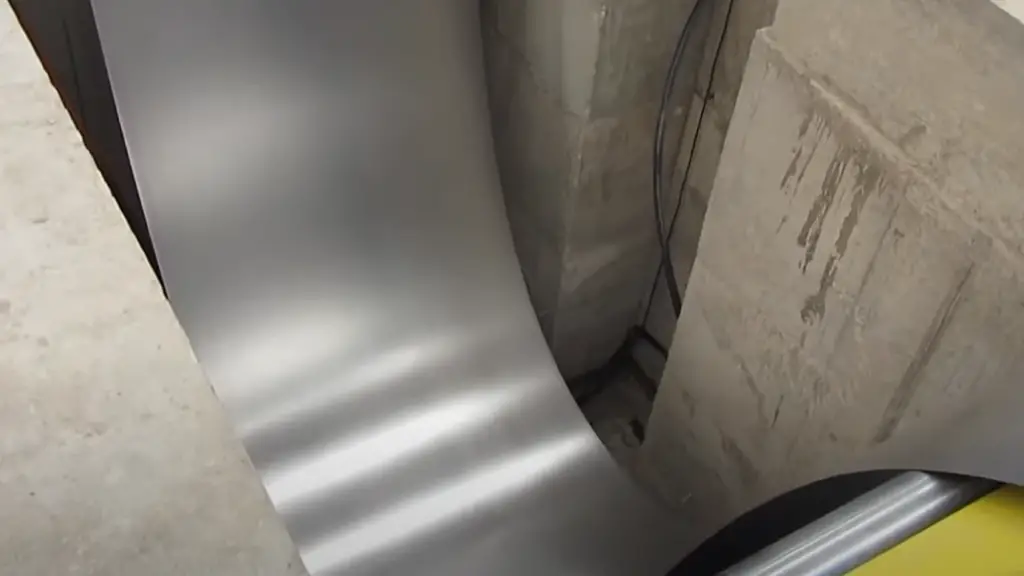
Exceptional yield strength and toughness are essential for the production of hardware such as servers, gears and cylinders that are subjected to high pressure and mechanical stress. Moreover, the negative coefficient of heat expansion of natural steel guarantees dimensional stability even under significant temperature changes, which is crucial for maintaining equipment reliability in various operating conditions. Therefore, the potent mix of features offered by 17-4 PH made it the preferred choice in the challenging conditions of the petroleum industry.[6]
FAQ
What does 17-4 PH mean?
17-4 PH is an abbreviation for the content and treatment of the material. The number “17” stands for 17% Cr element content, which plays a crucial role in increasing the alloy’s rust resistance. Such a high level has a protective layer on the surface that shields the material from environmental elements.
The number “4” in the designation should be read as 4% Ni- in the grade. The addition of it further improves the material’s anti-corrosion properties and imparts it with superior ductility, rendering it ideal for a variety of demanding uses.
Finally, the term “PH” in the marking of stainless steel should be taken to mean “precipitation hardening”. This thermal processing involves a series of heating and cooling steps, which leads to a transformation of the alloy’s microstructure. As a result, the alloy acquires exceptional strength, toughness, and longevity.
In summary, grade 17-4 PH is a cr-moly steel that has been precipitation hardened, which gives it impressive tensile properties, hardness, wear tolerance, and overall performance.
What is the 17-4 PH material specification?
The 17-4 PH specification for stainless steel defines the specific chemical composition and processing requirements for this type of alloy. The standard is set by the American Iron and Steel Institute (AISI), that ensures the uniformity and quality of products from different manufacturers. According to their definition, grade 17-4 PH should contain approximately 17% Chromium and 4% Nickel by weight. The compound must also undergo a rainfall quenching process that increases its durability and solidity. This standard ensures that alloy 17-4 PH, regardless of source, would have the predictable features and characteristics. So, compliance with the 17-4 PH stainless steel standard is crucial to meet the alloy requirements of a variety of applications.
What is the difference between 17-4 and 17-4 PH?
While often used interchangeably, the terms “17-4” and “17-4 PH” refer to subtly different aspects of this specific steel alloy. The designation “17-4” primarily focuses on the alloy’s composition, indicating that it contains 17% chromium and 4% nickel. This composition provides excellent corrosion resistance and high strength properties.
However, “17-4 PH” not only refers to the alloy’s composition but also specifically highlights the “precipitation hardening” process it undergoes. This heat treatment process involves a series of steps such as solution annealing, quenching, and aging, which significantly improve the steel’s strength and hardness. The precipitation hardening process transforms the microstructure of the alloy, resulting in enhanced mechanical properties and increased durability.
Therefore, while all 17-4 PH steel is 17-4, not all 17-4 steel can be considered 17-4 PH unless it has undergone the precipitation hardening process. This distinction is crucial in industries where precise material specifications are required to meet specific performance criteria and ensure the highest quality standards.
What does 4 PH mean?
The “4 PH” in 17-4 PH Stainless Steel is a critical part of its designation. The “4” refers to the alloy’s nickel content, which is approximately 4%. Nickel contributes to the overall toughness and corrosion resistance of the alloy. The “PH” stands for “precipitation hardening”, a heat treatment process that increases the alloy’s strength and hardness. This process involves heating the alloy to a certain temperature and then cooling it slowly, which causes the formation of small, dispersed particles throughout the metal. The end result is a material that is extremely durable, even when exposed to harsh conditions. Therefore, 4 PH signifies a stainless steel alloy that contains approximately 4% Nickel and has undergone the precipitation hardening process for improved durability and strength.
What is the composition of 17-4 PH?
17-4 PH Stainless Steel is a high-strength, highly corrosion-resistant material with a unique composition. The “17-4” in its name represents its primary constituents: approximately 17% Chromium and 4% Nickel. The remainder of the alloy is primarily made up of Iron, with smaller quantities of Manganese, Silicon, and Carbon. It also contains trace amounts of elements such as Niobium, Copper, and Tantalum. The alloy’s distinctive properties, including its excellent strength, toughness, and corrosion resistance, are largely due to this specific blend of elements. However, it’s important to note that the exact composition can vary slightly depending on the manufacturer and specific application.
Useful Video: What is 17-4ph Stainless Steel?
Conclusion
In conclusion, 17-4 PH Stainless Steel is an exceptional material that brings together a remarkable combination of strength, hardness, and corrosion resistance. Its unique composition, consisting of elements such as Chromium, Nickel, and Copper, along with the precipitation hardening process it undergoes, contributes to its superior performance compared to many other alloys. These properties make it highly valuable in demanding industries like oil and gas, where reliability and durability are of utmost importance.
The standard composition of 17-4 PH Stainless Steel, as set by the American Iron and Steel Institute, ensures consistency and reliability across various applications. This makes it a go-to material for situations that require resilience and long-lasting performance. Whether referred to as 17-4 or 17-4 PH, this material undeniably holds a crucial place in today’s industrial and manufacturing landscape, offering unmatched strength and durability for a wide range of applications.
With its exceptional properties and widespread use, 17-4 PH Stainless Steel continues to play a pivotal role in advancing various industries, from aerospace to medical devices. Its remarkable balance of strength, hardness, and corrosion resistance makes it an indispensable material for critical applications where performance and reliability are paramount.
References:
- https://www.ulbrich.com/alloys/17-4-ph-stainless-steel-wire-uns-s17400/?gclid=CjwKCAjw_aemBhBLEiwAT98FMhtjwuLqHmlDhElRt0ci6cxKyKrTLDUIKZJostC0Yw35sfQdYmnUQxoCcyMQAvD_BwE
- https://www.sverdrupsteel.com/products/martensitic-alloys/alloy-1-4542-17-4-ph
- https://www.aalco.co.uk/datasheets/Stainless-Steel-14542-Bar_100.ashx
- https://blog.thepipingmart.com/grades/17-4-ph-stainless-steel-properties-and-uses/
- https://www.azom.com/article.aspx?ArticleID=6778
- https://www.ambicasteels.com/blog/7-things-you-did-not-know-about-17-4-ph-stainless-steel/



